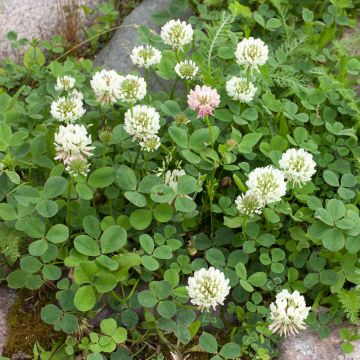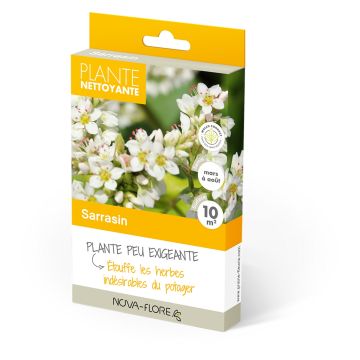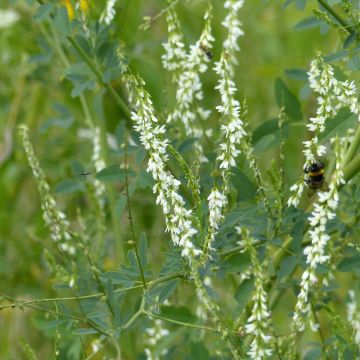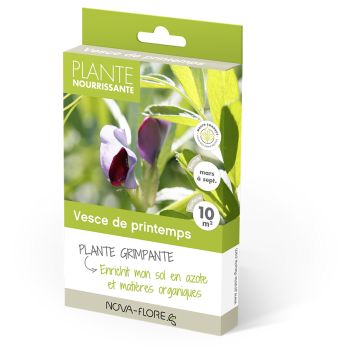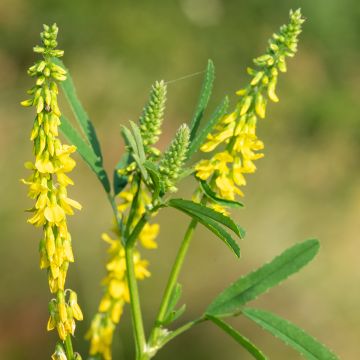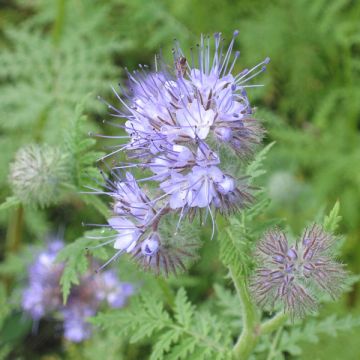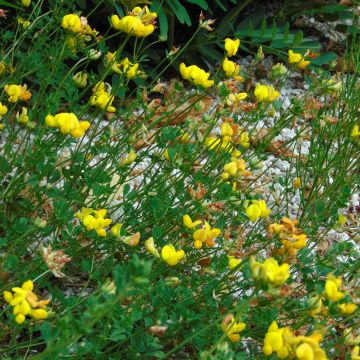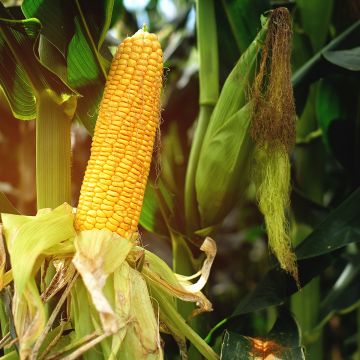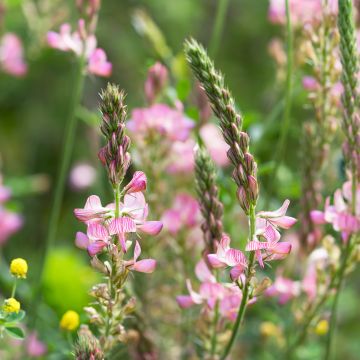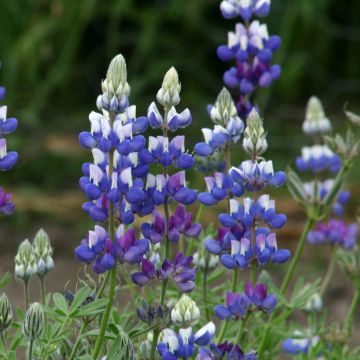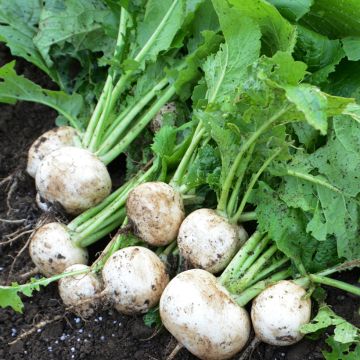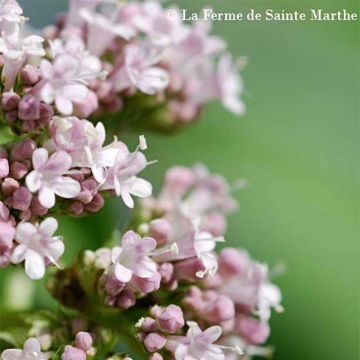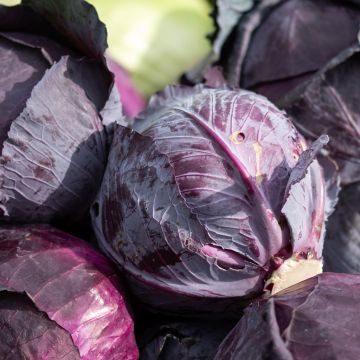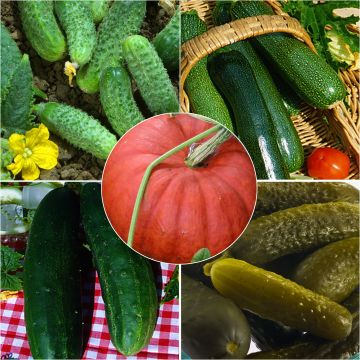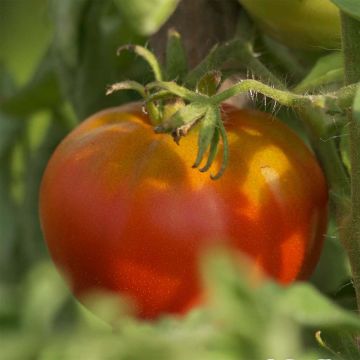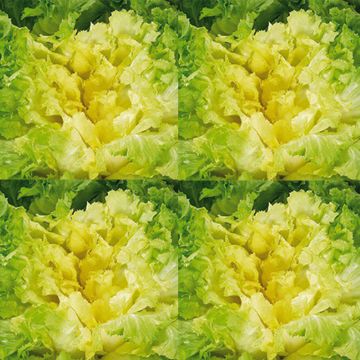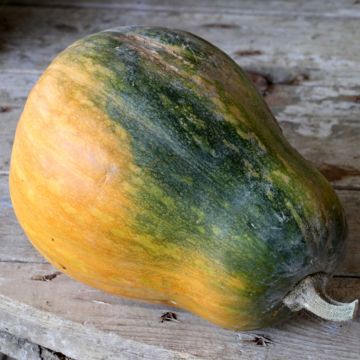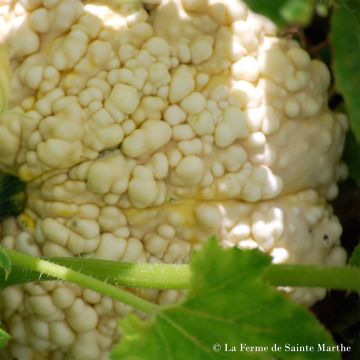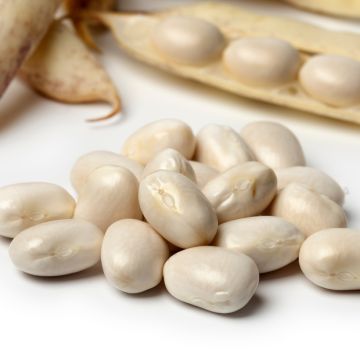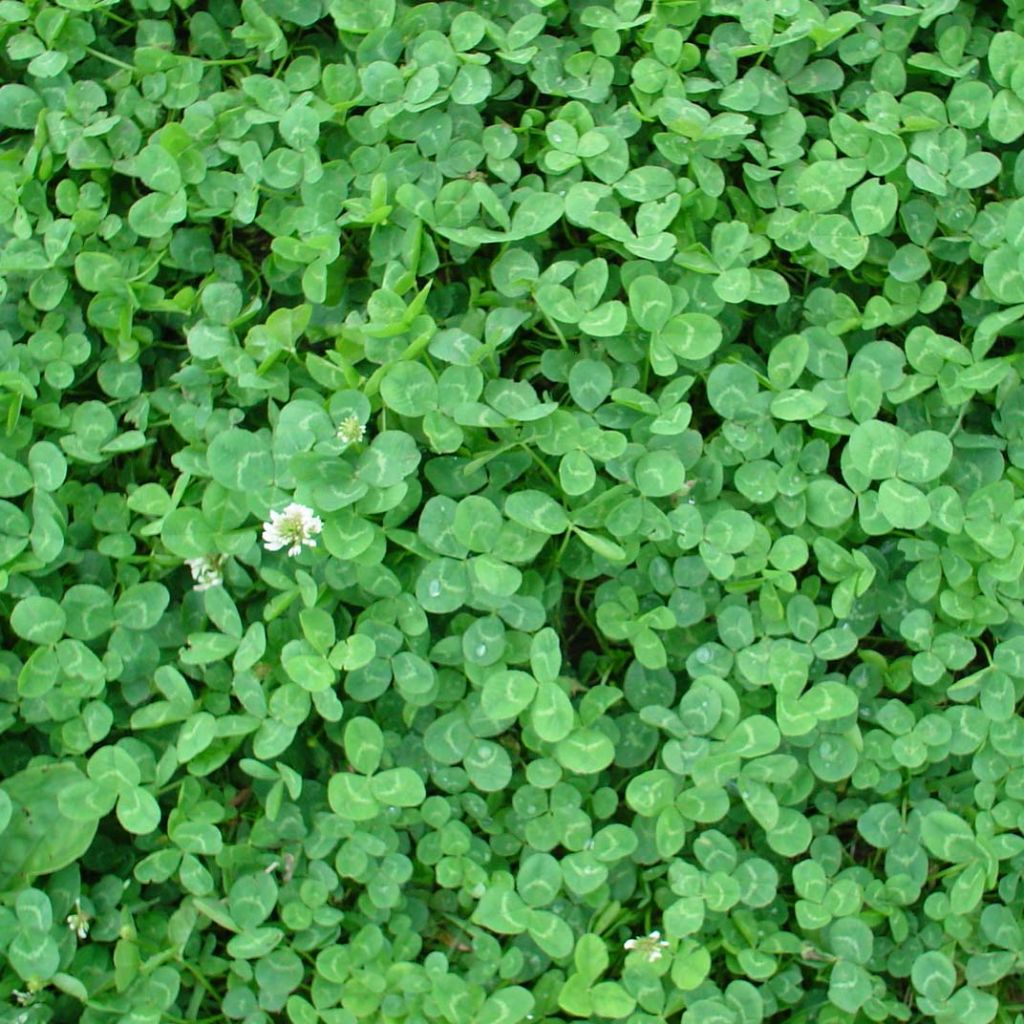

Trifolium repens Dwarf
Trifolium repens Dwarf
Trifolium repens nain
Dutch clover, Creeping clover, White clover
Why not try an alternative variety in stock?
View all →This plant carries a 6 months recovery warranty
More information
We guarantee the quality of our plants for a full growing cycle, and will replace at our expense any plant that fails to recover under normal climatic and planting conditions.
Seed-only orders are dispatched by sealed envelope. The delivery charge for seed-only orders is €3.90.
Seed-only orders are dispatched by sealed envelope. The delivery charge for seed-only orders is €3.90.
Seed-only orders are dispatched by sealed envelope. The delivery charge for seed-only orders is €3.90.

Description
The white clover is a perennial legume, used as a green manure for several years or as fodder. It has the ability to fix atmospheric nitrogen in its roots. It is a herbaceous plant, reaching a height of 10 to 15cm (4 to 6in). This green manure will help to loosen the soil, limit weed growth, and combat soil leaching or rain compaction. Sow in March-April or, alternatively, in September.
The white dwarf clover belongs to the Fabaceae family (formerly Leguminosae) and the genus Trifolium like the purple clover or the Alexandrian clover. These different clovers are characterised by their leaves with 3 leaflets and their ability to fix atmospheric nitrogen in the soil. The white dwarf clover stands out due to its small size (10 to 15 cm (4 to 6in) in height). It has a significant root system, which helps to restructure the soil. Its flowering, in the form of white spherical heads, occurs throughout the summer. Very hardy, it thrives in all types of soils except for excessively acidic or wet soils. It can be sown in a secluded area, mixed with grass, or used as fodder.
Widely used in organically cultivated gardens, green manures like white dwarf clover have many advantages. They nourish and improve the soil by providing it with various nutrients and stimulating the soil's microbial life. Their roots will loosen, break up, and aerate the soil. Moreover, the presence of a vegetative cover protects the soil from leaching (nutrient loss in sandy soil), rain compaction (formation of a crust in loamy soil), and erosion (caused by runoff in case of heavy rain on sloping terrain). This vegetative cover also helps limit weed growth by preventing the growth of unwanted grasses. Finally, green manures are often honey-producing and attract pollinators.
Green manures are sown on uncultivated plots or intercalary plots, between rows of vegetables. They are either naturally destroyed by frost or mowed before seed formation. Once destroyed, they can be left in place as mulch, or crushed and incorporated into the superficial layers of the soil, or collected and added to compost.
Trifolium repens Dwarf in pictures
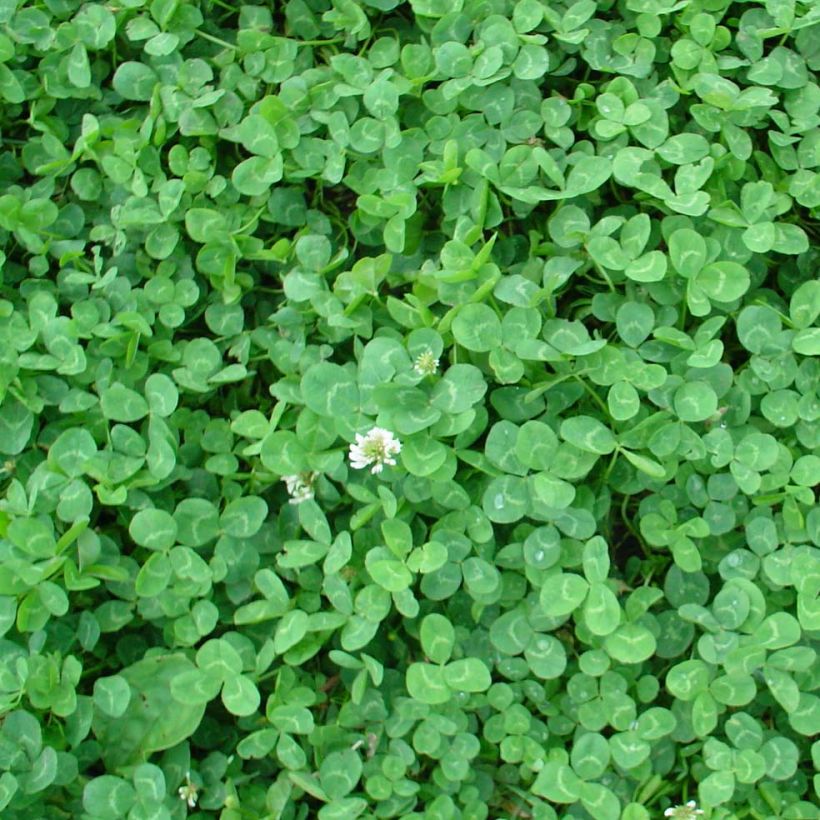

Harvest
Plant habit
Foliage
Botanical data
Trifolium
repens
nain
Fabaceae
Dutch clover, Creeping clover, White clover
Cultivar or hybrid
Perennial
Other Green fertilisers
Planting and care
Sowing can be done in March-April or, if not, in September. Dwarf white clover thrives in all types of soils except for excessively acidic or wet soils.
Prefers a sunny exposure.
Sow by broadcasting, then cover the seeds with soil using a rake. Firm the soil with the back of the rake and water with a fine spray.
Dwarf white clover does not require any particular maintenance during cultivation or watering.
Seedlings
Care
Intended location
-
, onOrder confirmed
Reply from on Promesse de fleurs
Vegetable seeds
Haven't found what you were looking for?
Hardiness is the lowest winter temperature a plant can endure without suffering serious damage or even dying. However, hardiness is affected by location (a sheltered area, such as a patio), protection (winter cover) and soil type (hardiness is improved by well-drained soil).

Photo Sharing Terms & Conditions
In order to encourage gardeners to interact and share their experiences, Promesse de fleurs offers various media enabling content to be uploaded onto its Site - in particular via the ‘Photo sharing’ module.
The User agrees to refrain from:
- Posting any content that is illegal, prejudicial, insulting, racist, inciteful to hatred, revisionist, contrary to public decency, that infringes on privacy or on the privacy rights of third parties, in particular the publicity rights of persons and goods, intellectual property rights, or the right to privacy.
- Submitting content on behalf of a third party;
- Impersonate the identity of a third party and/or publish any personal information about a third party;
In general, the User undertakes to refrain from any unethical behaviour.
All Content (in particular text, comments, files, images, photos, videos, creative works, etc.), which may be subject to property or intellectual property rights, image or other private rights, shall remain the property of the User, subject to the limited rights granted by the terms of the licence granted by Promesse de fleurs as stated below. Users are at liberty to publish or not to publish such Content on the Site, notably via the ‘Photo Sharing’ facility, and accept that this Content shall be made public and freely accessible, notably on the Internet.
Users further acknowledge, undertake to have ,and guarantee that they hold all necessary rights and permissions to publish such material on the Site, in particular with regard to the legislation in force pertaining to any privacy, property, intellectual property, image, or contractual rights, or rights of any other nature. By publishing such Content on the Site, Users acknowledge accepting full liability as publishers of the Content within the meaning of the law, and grant Promesse de fleurs, free of charge, an inclusive, worldwide licence for the said Content for the entire duration of its publication, including all reproduction, representation, up/downloading, displaying, performing, transmission, and storage rights.
Users also grant permission for their name to be linked to the Content and accept that this link may not always be made available.
By engaging in posting material, Users consent to their Content becoming automatically accessible on the Internet, in particular on other sites and/or blogs and/or web pages of the Promesse de fleurs site, including in particular social pages and the Promesse de fleurs catalogue.
Users may secure the removal of entrusted content free of charge by issuing a simple request via our contact form.

































